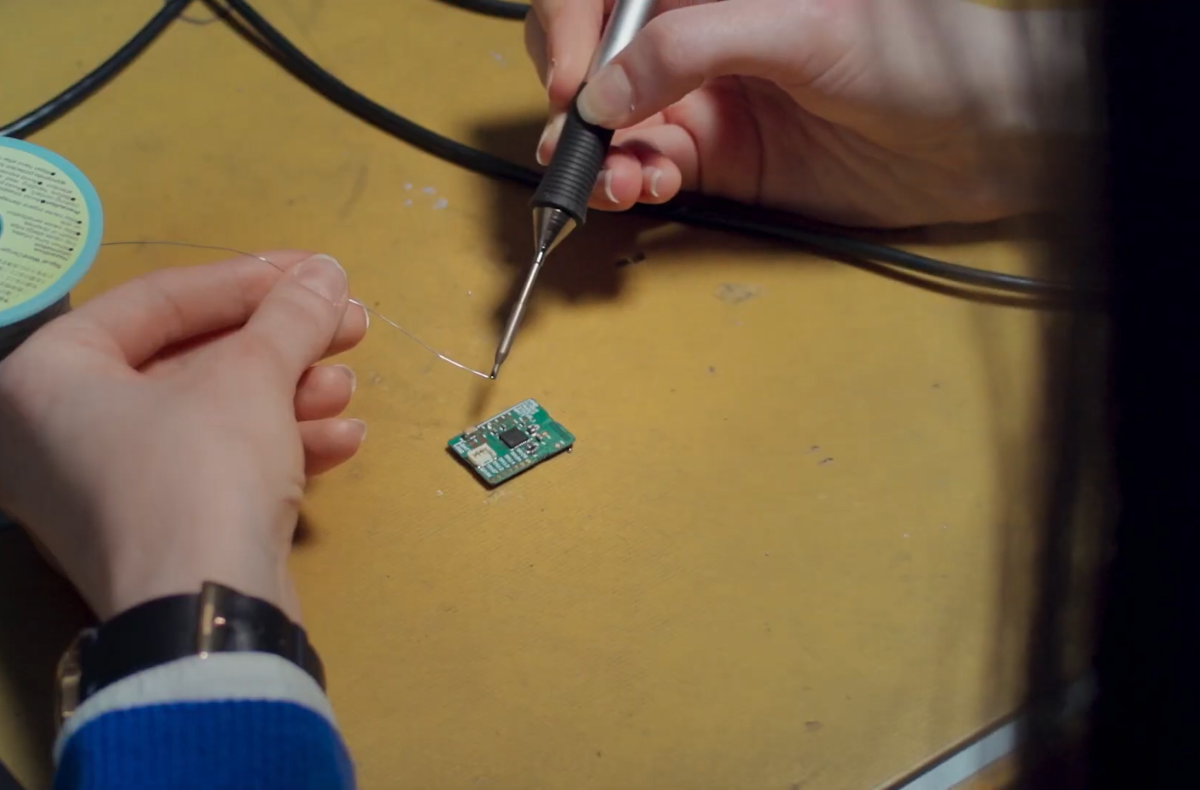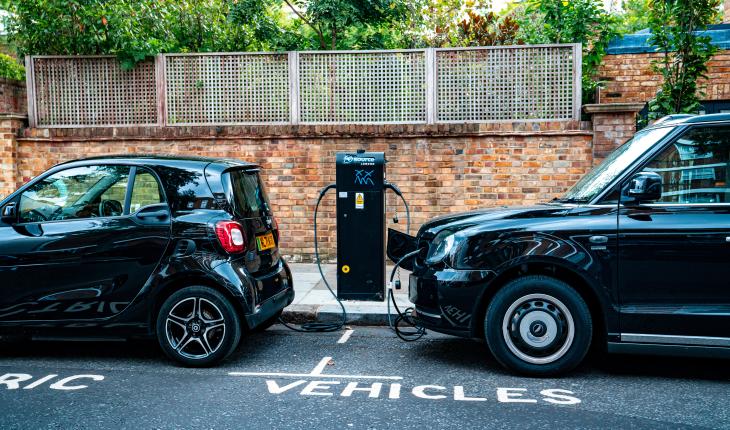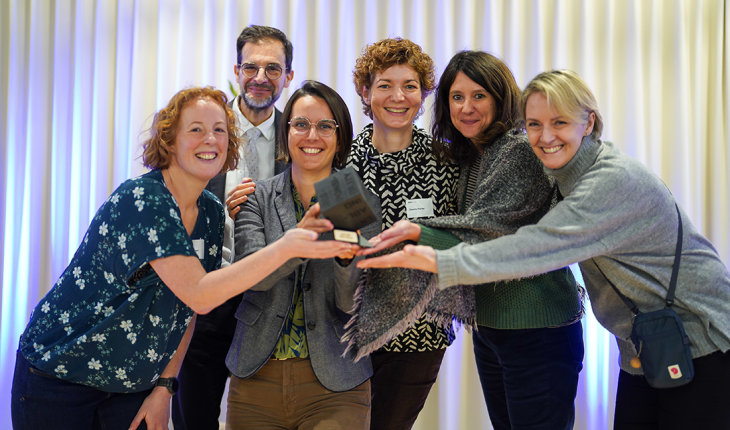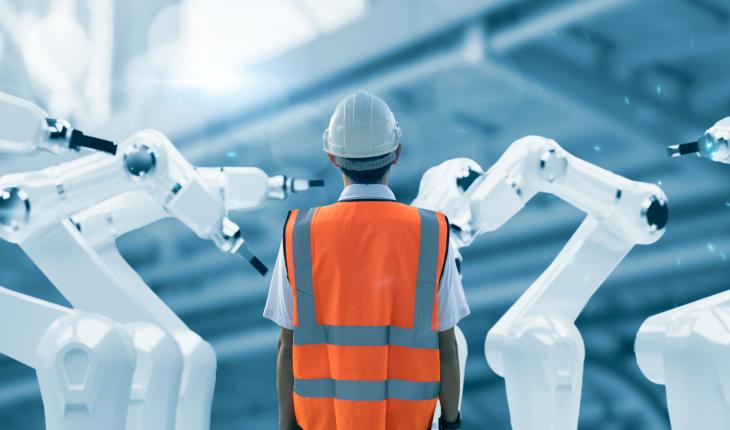“Being part of the NCCR Automation has helped me gain a big picture view”

NCCR Automation: Naomi, your path to becoming a researcher and participating in our NCCR was rather special. Please tell us about it!
Naomi Stricker: With pleasure! After obtaining my Master’s degree in electrical engineering from ETH Zurich, I moved to California. There, I worked for about two years at a company that builds helicopter simulators. Unlike in my Master’s, where my projects focused on nano optics, my work in California was mainly about embedded systems and testing their functionality…
… What exactly are embedded systems?
Imagine you have a micro-controller based system – something that can perform calculations or tasks, has some memory and input/output peripherals – with a specific functionality that’s part of a bigger system. Like for example a chip in your dishwasher that performs tasks based on the buttons you press.
In your case, it was a helicopter-flying simulator.
Exactly. In the simulators, there were also buttons to press, levers, displays and so on. I made sure that the embedded systems controlling those made the simulator behave identical to the real helicopter and that they communicated the necessary information to the central computer, where the simulation software runs. This software would for example, display the landscape around the helicopter as it ascends and provide feedback to the embedded systems depending on the helicopters surroundings. During my work on these embedded systems, I realized that they are everywhere and that they are quite important. So I wanted to learn more about them and work on their development. This led me to apply for the PhD I started 3 years ago.
And what exactly are you doing in your PhD?
I work on developing robust energy harvesting systems, their communication and new applications. Imagine a small device, powered by a small solar panel. The energy consumption of the device is limited and needs to be managed wisely. This can be done relying on energy predictions to decide when to use how much energy, for example based on the past or weather forecasts. But what if the prediction of the available energy is wrong? Being able to deal with that will make such a harvesting system more robust. Since the NCCR Automation started, I also widened my perspective to work on how several such harvesting systems can communicate and work together and where these distributed systems can be applied.
Can you give an example?
Sure. Heating and ventilating buildings is quite energy intensive and expensive. If you had sensors that could measure things like temperature or air quality distributed in a large building and outdoors, you could manage the building much more efficiently. That would save energy and money. But connecting everything with cables to a central controlling unit can be quite impractical and costly, if it is possible at all. Batteries are not very environmentally friendly, they run out and replacing them takes a lot of time.
So it would be better to equip these sensors with solar panels? These work indoors?
Yes! Energy harvesting sensors are a wonderful alternative. There are of course still some difficulties since there is relatively little light, so not much energy to be harvested. The available energy also varies over time and you need certain types of electronics. But they do work!
What happens when the prediction of the available energy is wrong?
In the worst case, the system will not work. For example, it may unexpectedly not perform any measurements during the night. This is what you want to avoid. More generally, the energy harvested by the solar panel and the energy that is temporarily stored, should be used efficiently. Yet not so aggressively that the system often fails when the prediction is wrong. The energy is then used to sense information, possibly process and communicate. We are therefore limited in when and how often sensed information can be available, so the control loops that require this information need to be well designed.
The control loop is then also what decides if the heating is turned up, for example?
Exactly. The sensors measure and communicate their data to the controller. Based on the sensed data, this controller then decides how to adjust the heating. However, the controller also has to take into account the available energy of the sensors. If the sun is out and the sensor has plenty of energy available, the controller can tell it to measure frequently, so that the controller can make better-informed decisions. In contrast, if the sensor has little energy left, the controller cannot ask it to perform frequent measurements or the sensor would completely run out of energy.

How does your project fit into the context of the NCCR and its goals?
The NCCR deals with various research topics related to energy, this aligns well with my research in two ways. There is an aspect of control when deciding when to use how much energy. And secondly, the systems I work with can be used in control applications. I would say that harvesting systems are especially interesting in distributed systems, which play a big role in automating infrastructure. I also build actual systems to demonstrate my work which is also an important goal for the NCCR. And since I also work on making these harvesting systems more dependable, that also fits in the goal of the NCCR to make automation as a whole more dependable.
How do you think the NCCR has influenced or will influence your work? Do you have any expectations?
Before the NCCR started, I focused on the dependability of a single energy harvesting system. Since then, my focus broadened to include communication of multiple energy harvesting systems and their use in centralized control. This has helped me see the bigger picture of the research field and its many possibilities and open questions, so being part of the NCCR has already been extremely beneficial to me. Since it is the first large scale project that I’m part of, I have no explicit expectations. But I’ve spoken to many of the members already, so that’s great.
Perhaps those conversations may lead to collaborations. Have you met members that work on similar topics elsewhere?
Yes, actually! Since the start of the NCCR, I have begun working with a few people from the group of Prof. Colin Jones from EPFL. Together we have been working on combining energy harvesting sensors and control. This has been very interesting.
Meet Naomi as part of the #NCCRWomen campaign here.
Find out more about Naomi here.



